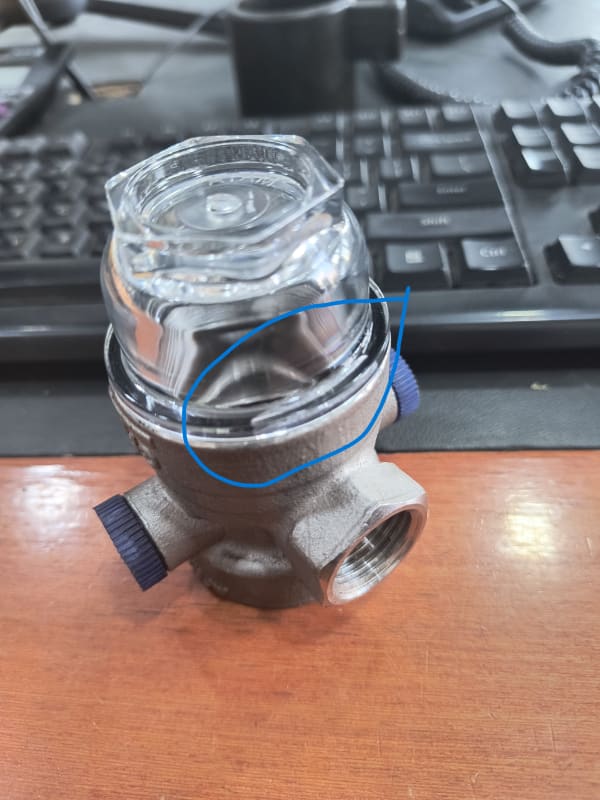hello to all,
i am attaching image below which showing thermoplastic transparent cap part thread jointed with a stainless steel body, product name is pressure reducing valve.
so in the image there is visible crack marked with blue.
this crack appear very later after assembling with stainless steel body. like, after few hours of assembly the crack starts appearing and then slowly propagate through the part at various location in the part.
we are using rubber O-ring between joint of thermoplastic part and stainless steel part.
so my question is what are the possible reasons behind this and any solution?
i haven't much expertise in plastic industry, so your opinion would be very helpful.
THERMOPLASTIC COMPONENT EXACT MATERIAL GRADE IS POLYCARBONATE 122.
Thanks.

i am attaching image below which showing thermoplastic transparent cap part thread jointed with a stainless steel body, product name is pressure reducing valve.
so in the image there is visible crack marked with blue.
this crack appear very later after assembling with stainless steel body. like, after few hours of assembly the crack starts appearing and then slowly propagate through the part at various location in the part.
we are using rubber O-ring between joint of thermoplastic part and stainless steel part.
so my question is what are the possible reasons behind this and any solution?
i haven't much expertise in plastic industry, so your opinion would be very helpful.
THERMOPLASTIC COMPONENT EXACT MATERIAL GRADE IS POLYCARBONATE 122.
Thanks.

